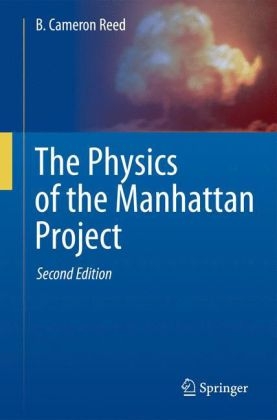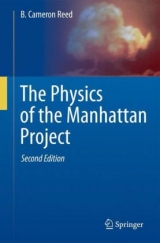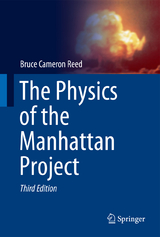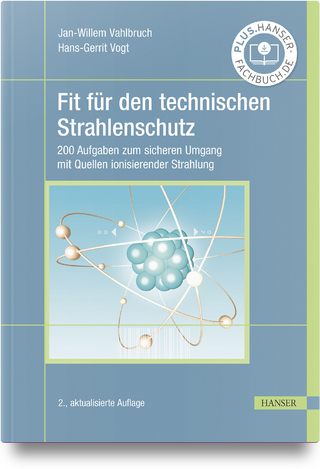The Physics of the Manhattan Project
Springer Berlin (Verlag)
978-3-642-14708-1 (ISBN)
- Titel erscheint in neuer Auflage
- Artikel merken
Preface
Part 1. Energy Release in Nuclear Reactions, Neutrons,
Fission, and Characteristics of Fission
1.1 Notational Conventions for Mass Excess and Q-Values
1.2 Rutherford and the Energy Release in Radium Decay
1.3 Rutherford’s First Artificial Nuclear Transmutation
1.4 Discovery of the Neutron
1.5 Artificially-Induced Radioactivity and the Path to Fission
1.6 Energy Release in Fission
1.7 The Bohr-Wheeler Theory of Fission: The Z2/A Limit Against Spontaneous Fission
1.8 Energy Spectrum of Fission Neutrons
1.9 Leaping the Fission Barrier
1.10 A Semi-Empirical Look at the Fission Barrier
Part 2. Critical Mass and Efficiency
2.1 Neutron Mean Free Path
2.2 Critical Mass: Diffusion Theory
2.3 Effect of Tamper
2.4 Estimating Bomb Efficiency - Analytic
2.5 Estimating Bomb Efficiency – Numerical
2.6 Another Look at Untamped Criticality: Just One Number
Part 3. Producing Fissile Material
3.1 Reactor Criticality
3.2 Neutron Thermalization
3.3 Plutonium Production
3.4 Electromagnetic Separation of Isotopes
3.5 Gaseous (Barrier) Diffusion
Part 4. Complicating Factors
4.1 Boron Contamination in Graphite
4.2 Spontaneous Fission of 240Pu, Predetonation, and Implosion
4.3 Tolerable Limits for Light-Element Impurities
Part 5. Miscellaneous Calculations
5.1 How Warm Is It?
5.2 Brightness of the Trinity Explosion
5.3 A Model for Trace Isotope Production in a Reactor
Appendix A Selected -Values and Fission Barriers
Appendix B Densities, Cross-Sections, and Secondary Neutron Numbers
Appendix C Energy and Momentum Conservation in a Two-Body Collision
Appendix D Energy and Momentum Conservation in a Two-Body Collision That Produces a
Gamma-Ray
Appendix E Formal Derivation of the Bohr-Wheeler Spontaneous Fission Limit
Appendix F Average Neutron Escape Probability From Within a Sphere
Appendix G The Neutron Diffusion Equation
Appendix H Questions and Answers
Appendix I Further Reading
Appendix J Useful Constants and Conversion Factors
| Erscheint lt. Verlag | 9.10.2010 |
|---|---|
| Zusatzinfo | XIII, 170 p. 45 illus. |
| Verlagsort | Berlin |
| Sprache | englisch |
| Original-Titel | The Physics of the Manhattan Project |
| Maße | 155 x 235 mm |
| Gewicht | 420 g |
| Themenwelt | Naturwissenschaften ► Chemie ► Physikalische Chemie |
| Naturwissenschaften ► Physik / Astronomie ► Atom- / Kern- / Molekularphysik | |
| Schlagworte | Calculate Critical Mass Bomb • History of the Atomic Bomb • Manhattan Project • Manhattan Project Calculations • nuclear fission • Nuclear Research in the Forties • nuclear weapons • Oppenheimer Physics • Wartime Physics at Los Alamos |
| ISBN-10 | 3-642-14708-9 / 3642147089 |
| ISBN-13 | 978-3-642-14708-1 / 9783642147081 |
| Zustand | Neuware |
| Informationen gemäß Produktsicherheitsverordnung (GPSR) | |
| Haben Sie eine Frage zum Produkt? |
aus dem Bereich





